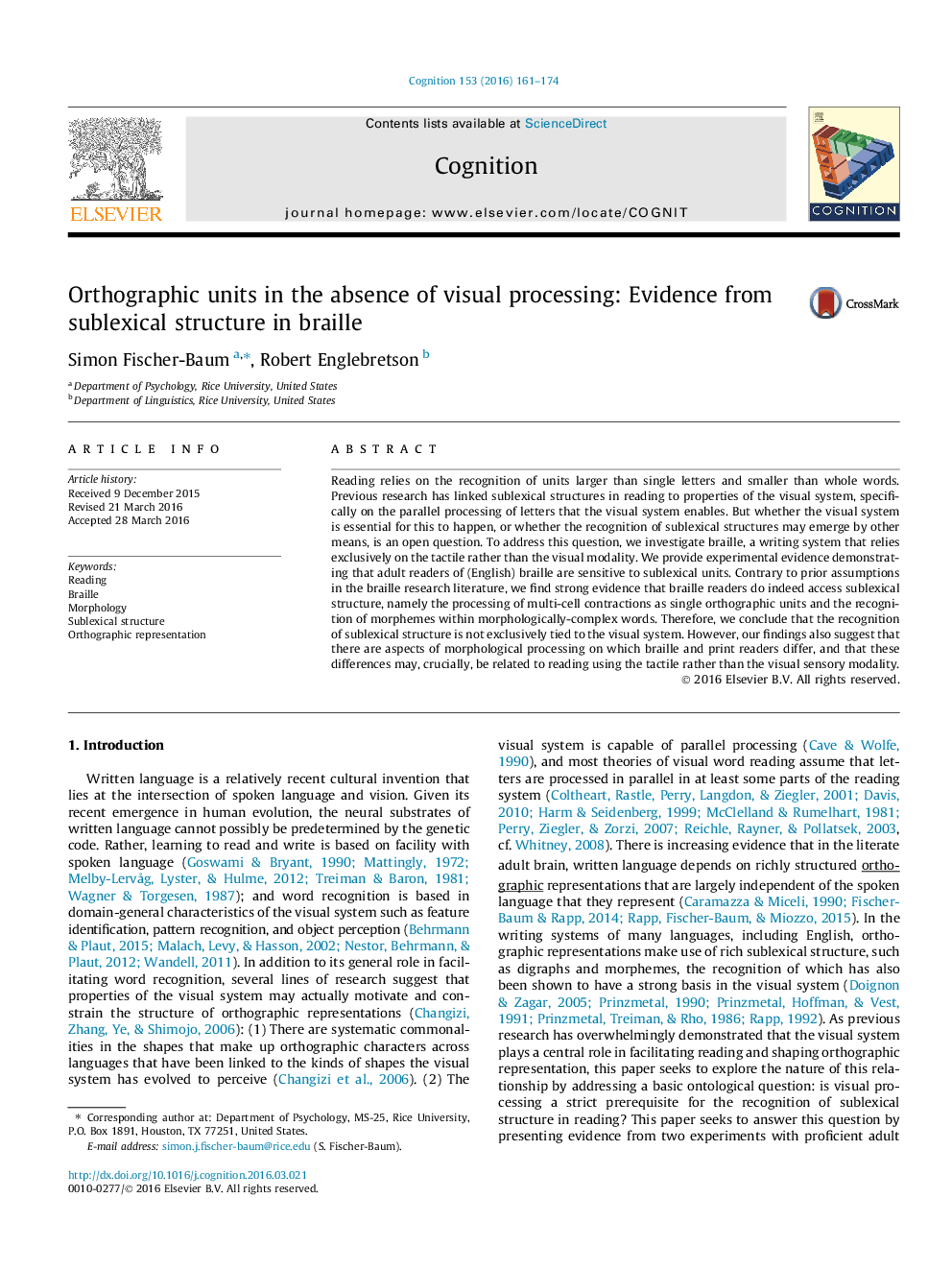| Article ID | Journal | Published Year | Pages | File Type |
|---|---|---|---|---|
| 7286066 | Cognition | 2016 | 14 Pages |
Abstract
Reading relies on the recognition of units larger than single letters and smaller than whole words. Previous research has linked sublexical structures in reading to properties of the visual system, specifically on the parallel processing of letters that the visual system enables. But whether the visual system is essential for this to happen, or whether the recognition of sublexical structures may emerge by other means, is an open question. To address this question, we investigate braille, a writing system that relies exclusively on the tactile rather than the visual modality. We provide experimental evidence demonstrating that adult readers of (English) braille are sensitive to sublexical units. Contrary to prior assumptions in the braille research literature, we find strong evidence that braille readers do indeed access sublexical structure, namely the processing of multi-cell contractions as single orthographic units and the recognition of morphemes within morphologically-complex words. Therefore, we conclude that the recognition of sublexical structure is not exclusively tied to the visual system. However, our findings also suggest that there are aspects of morphological processing on which braille and print readers differ, and that these differences may, crucially, be related to reading using the tactile rather than the visual sensory modality.
Related Topics
Life Sciences
Neuroscience
Cognitive Neuroscience
Authors
Simon Fischer-Baum, Robert Englebretson,
